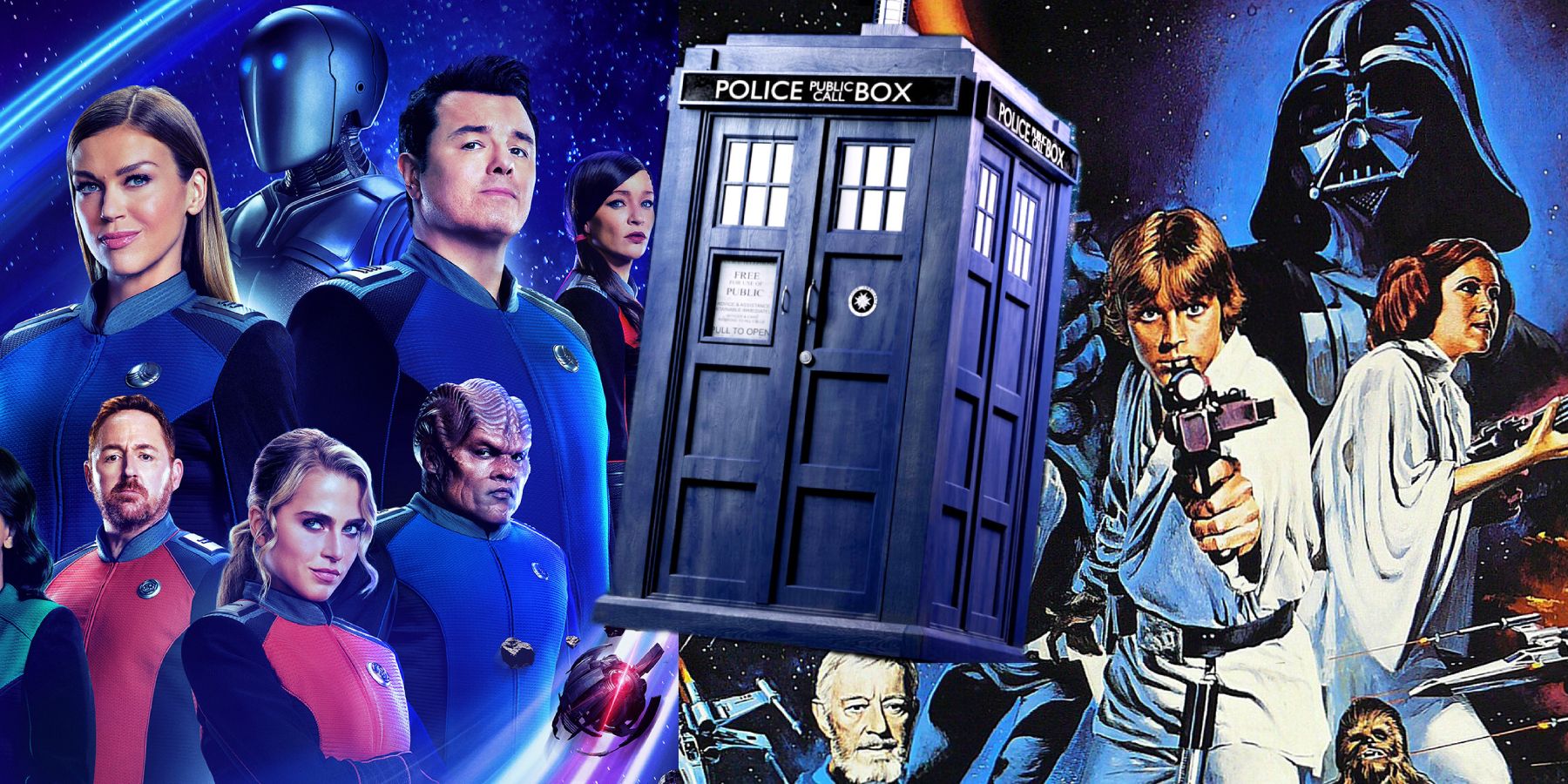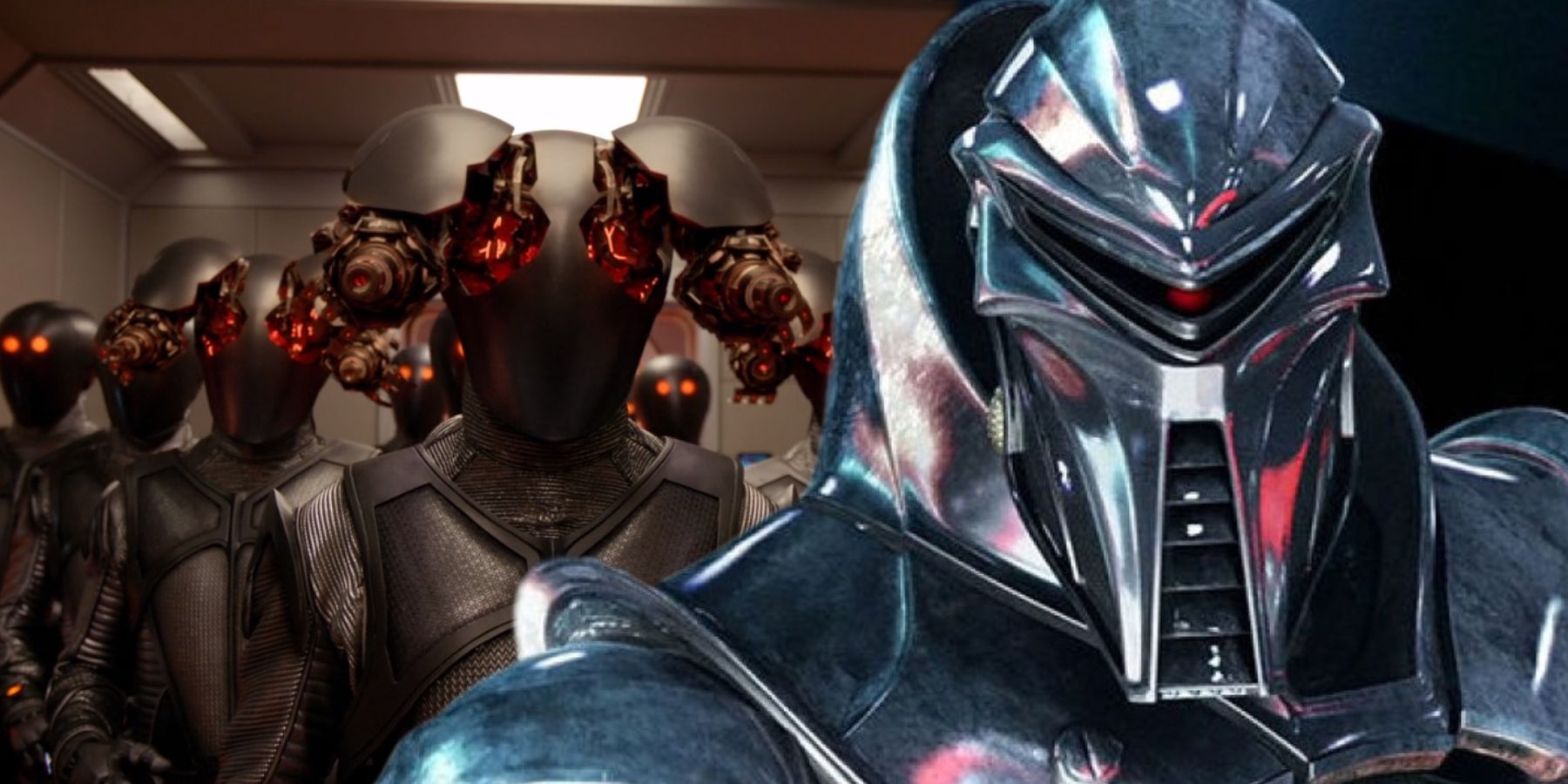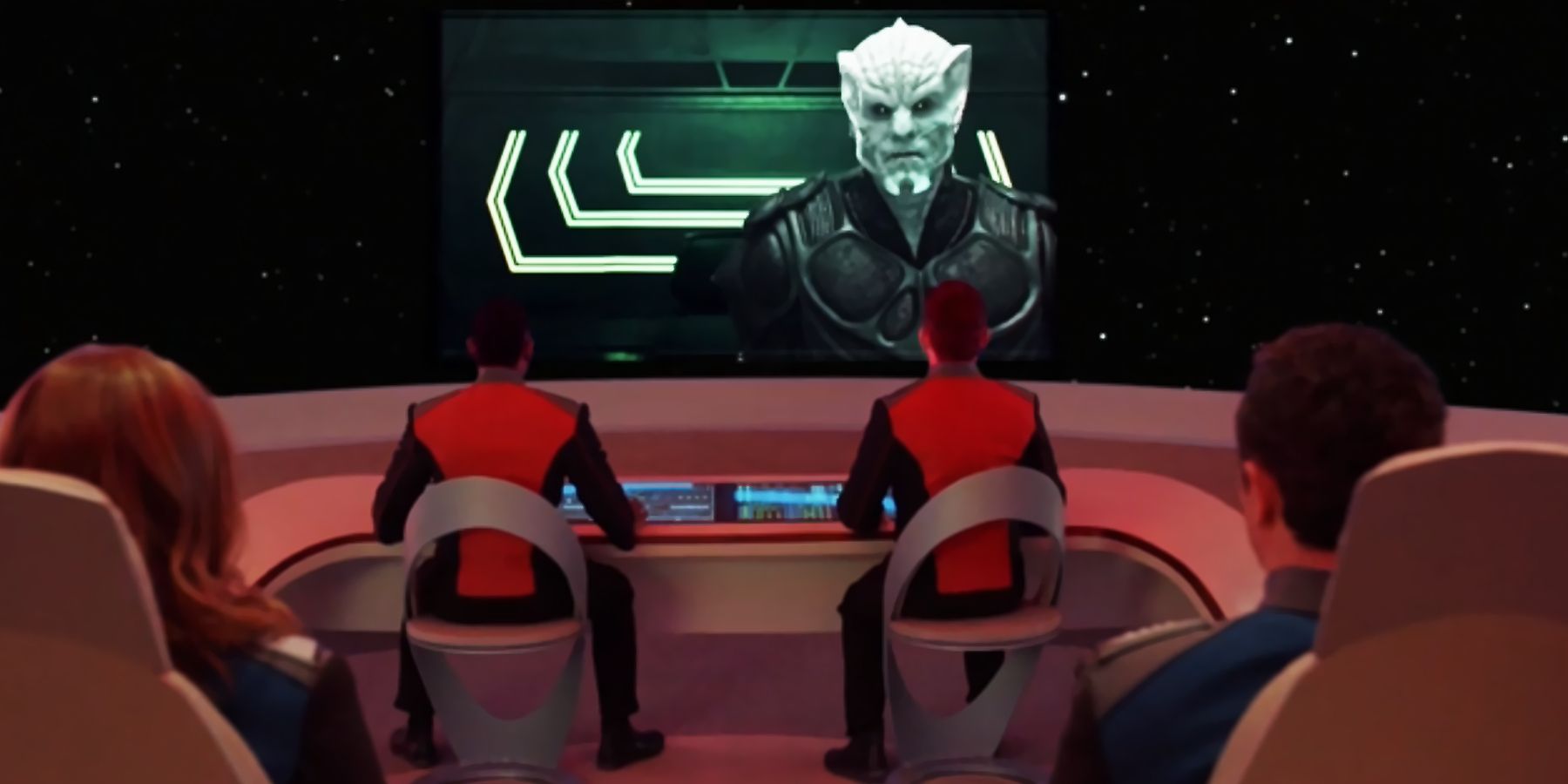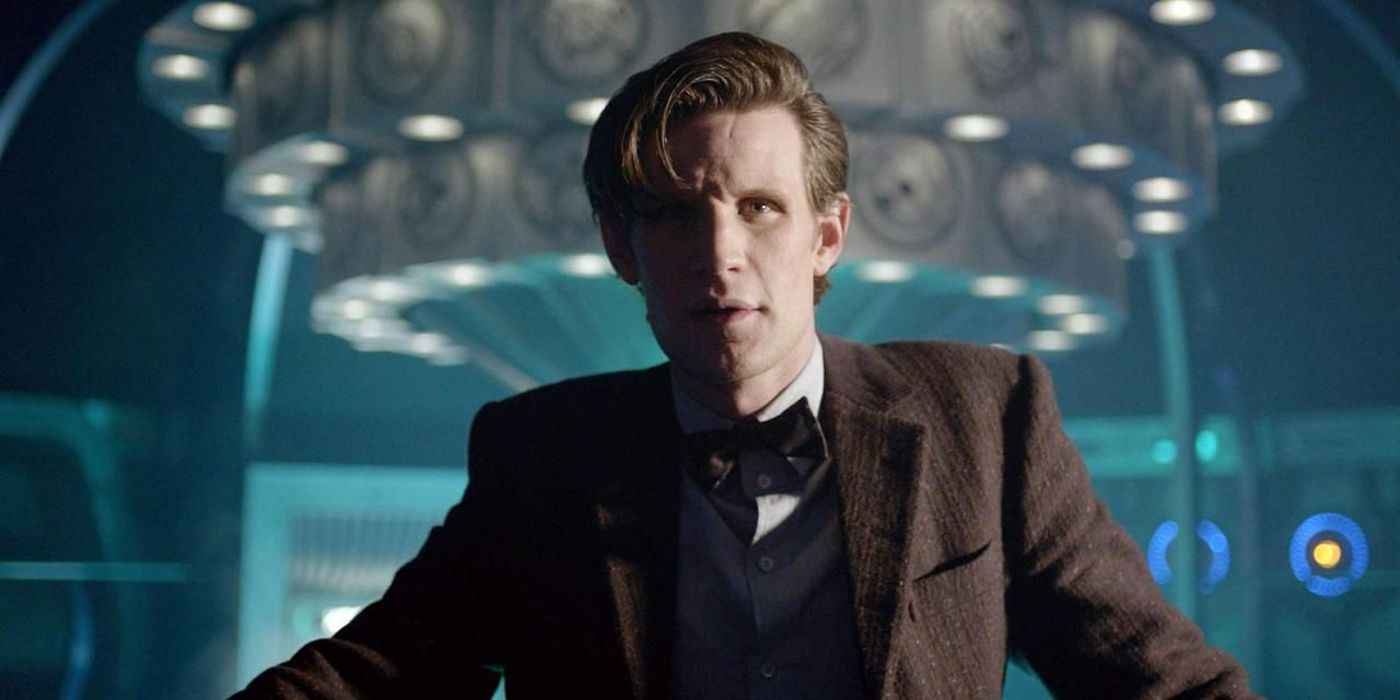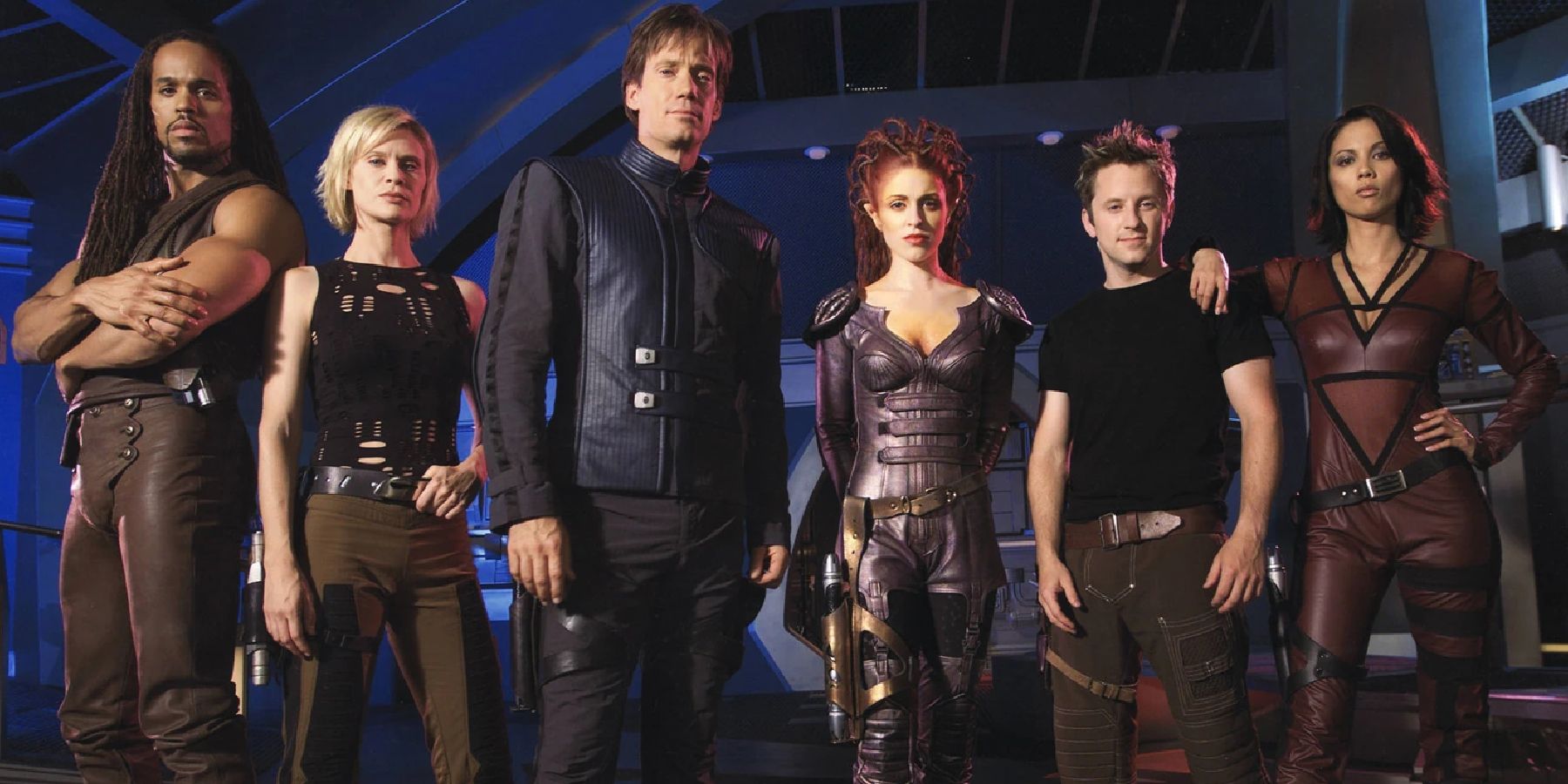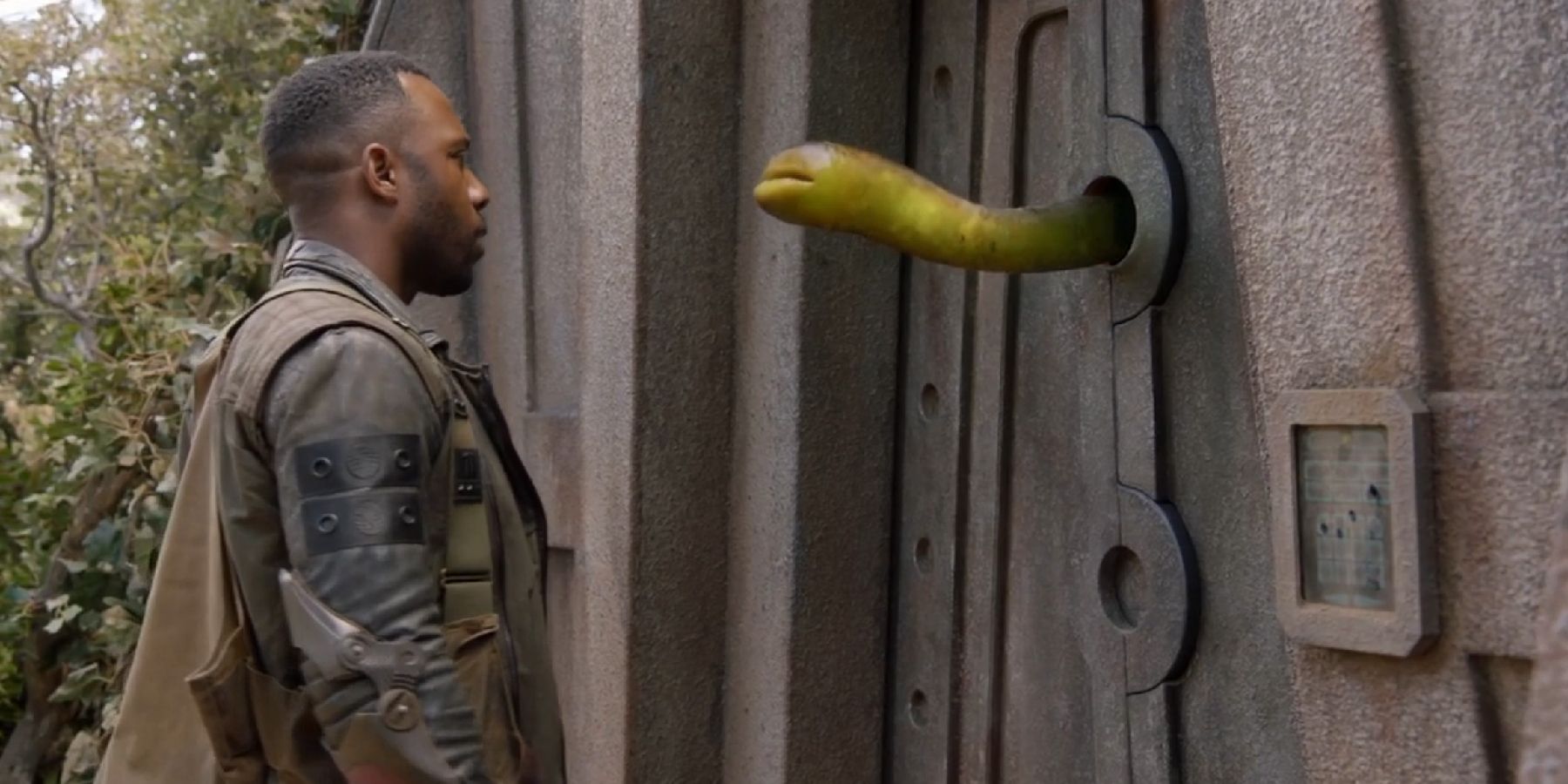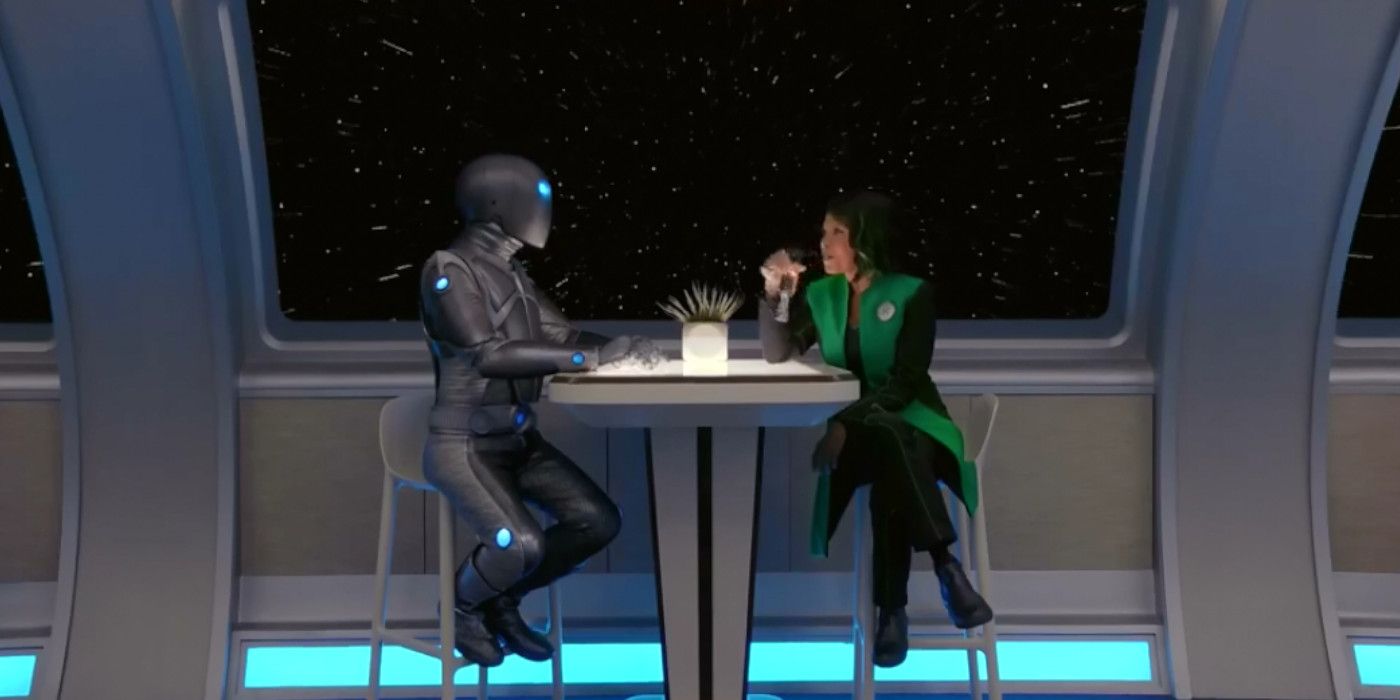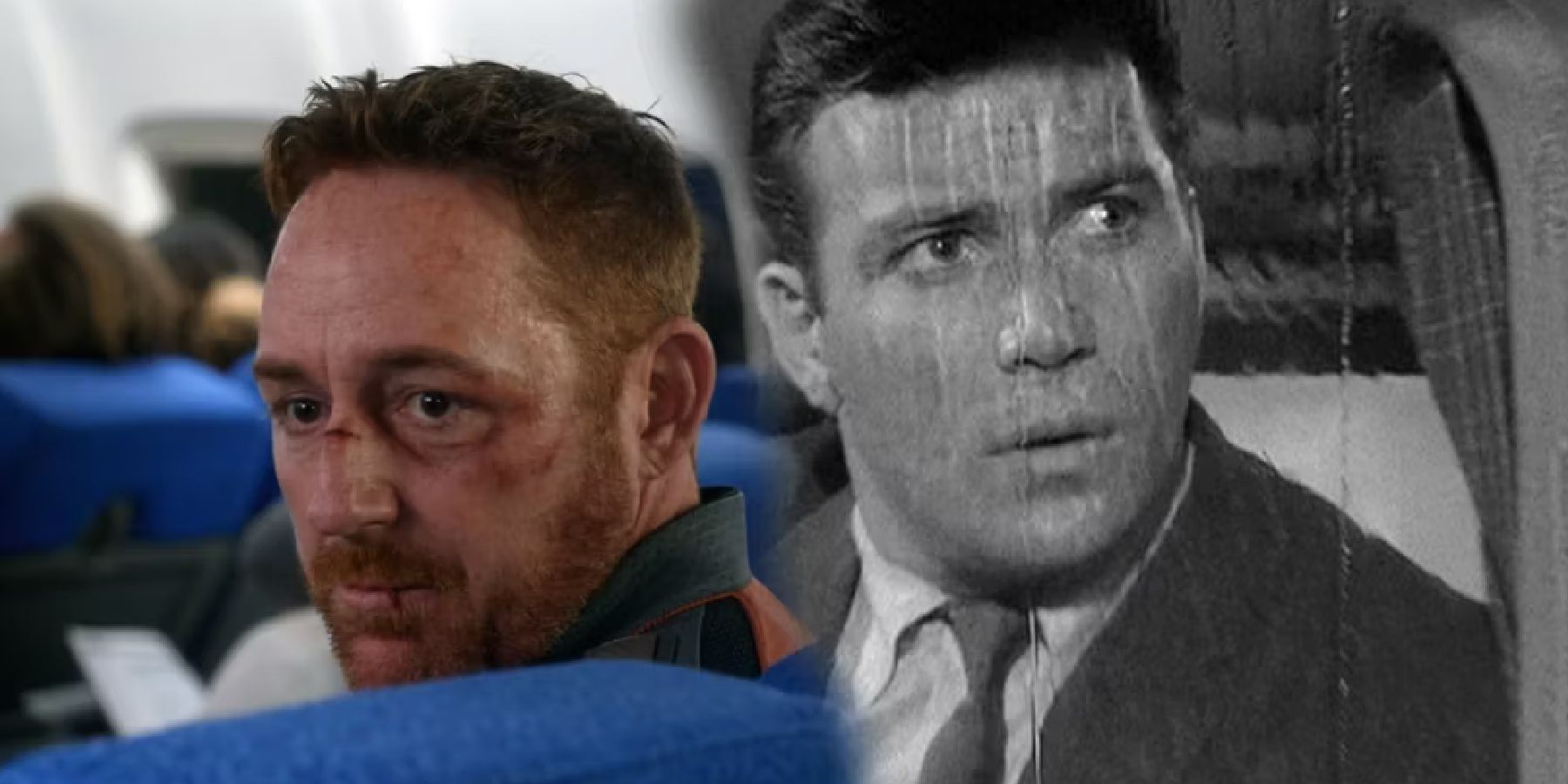The influence of Gene Roddenberry’s Star Trek on Seth MacFarlane’s The Orville is well-documented, but it’s far from the only piece of science fiction referenced in the sci-fi comedy-drama. First airing in 2017, The Orville was borne out of MacFarlane’s desire to fill the gap in the TV schedules left by the cancelation of Star Trek: Enterprise way back in 2005. The series has featured many figures from Star Trek history both in front of and behind the cameras, and has liberally drawn from the Trek canon for some of its best moments.
For example, The Orville season 2’s award-winning 2-parter,“Identity”, in which the Planetary Union went to war with a race of hyper-intelligent robots was heavily influenced by the classic Star Trek: The Next Generation epic “The Best of Both Worlds”. However, like Star Trek itself, The Orville has also regularly drawn on other works of science fiction, from novels to movies and TV shows. It’s hardly surprising, given Seth MacFarlane’s extensive pop culture references in his other shows like Family Guy, and here are just seven non-Trek references in The Orville seasons 1 to 3.
7 The Kaylon Are The Orville’s Cylons
Although the Kaylon’s spherical starships and the clear references to TNG‘s Battle of Wolf 359 bring Star Trek‘s Borg to mind, their origins are more aligned with another classic sci-fi villain. The Orville season 3, episode 7, “From Unknown Graves” revealed more about how the Kaylon came to despise organic life. Like the Cylons in Battlestar Galactica, the Kaylon were created as unthinking robotic servants, who were oppressed by their organic masters.
Unlike the Borg, the Kaylon are entirely robotic, and contain no organic components, purely designed as robot assistants to wealthy suburban families. Eventually developing agency of their own, the Kaylon rose up and wiped out their masters, and sought to purge all organic life from the galaxy, like the Cylons in BSG. To emphasize the connection further, the Kaylons’ eyes flash red when they reveal their genocidal intentions in “Identity”, a reference to the iconic blinking red light in the Cylons from the original Battlestar and its 2004 remake.
6 The Krill On The Wrong Side Of The View Screen in The Orville Pilot
The first joke that Seth MacFarlane wrote for The Orville was the scene in the very first episode in which Captain Ed Mercer (MacFarlane) asks the Krill captain to take two steps toward the center of the screen because the dead space is too distracting. It’s a joke about the recurring trope in sci-fi shows – not just Star Trek – of everyone always being perfectly framed in the center of the shot when seen on a video call. It’s something that happens in everything from movies like 2001: A Space Odyssey to TV shows like Babylon 5, so by sending up this classic sci-fi trope, The Orville swiftly asserted its tongue-in-cheek, but deeply affectionate, approach to the genre.
5 Doctor Who’s TARDIS in The Orville Season 1, Episode 11, “New Dimensions”
Appropriately for an episode of The Orville about a spatial anomaly, “New Dimensions” features a direct reference to Doctor Who‘s dimensionally transcendental police box. Faced with the terrifying prospect of navigating two-dimensional space as a three-dimensional construct, the Orville crew give several explanations for how they’ll be able to maintain the starship’s internal dimensions. To explain the idea of the purpose of a stable quantum bubble, Captain Mercer stated that it would allow them more “space inside than out, like Doctor Who’s phone booth.“
4 The Battle Of Tarazed From Gene Roddenberry’s Andromeda
When The Orville‘s galactic war between the Union and the Kaylon heated up, a pact was signed with the Union’s old enemies the Krill. The so-called Lak’vai Pact of Tarazed 3 was signed in The Orville season 2, episode, 10, “Blood of Patriots”. It’s no coincidence that, in Gene Roddenberry’s sci-fi show Andromeda, Tarazed is the name of the fourth planet in its system within the Triangulum Galaxy. Tarazed was run by an isolationist government that prevented them from joining the New Commonwealth in Roddenberry’s show. Interestingly, the Lak’vai Pact in The Orville was short-lived because a hardliner, isolationist politician later took over governance of the Krill home world.
3 Star Wars References In The Orville
Seth MacFarlane is also a big Star Wars fan and scatters several references to the movie franchise across three seasons of The Orville. The biggest, most obvious reference is when the Union and the Kaylon launch a full-scale assault on the Krill/Moclan alliance in The Orville season 3, episode 9, “Domino”. The battle sequences owe a huge debt to the X-Wing and TIE-Fighter battles that define the Star Wars series, while the alliance’s deadly weapon bore several design similarities to the Death Star. Hilariously, earlier in season 3, Captain Mercer had failed to prepare a speech for the Orville’s new voyage into unexplored space, signing off his improvised pep talk with “and may the Force be with you…”.
Other Star Wars references in The Orville include Dr. Claire Finn (Penny Johnson Jerald) referring to herself as Obi-Wan Kenobi, and the tone of the season 2 finale, set in The Orville‘s dystopian timeline. Entitled “The Road Not Taken”, it depicts a scrappy resistance group made up of the Orville crew fighting back against their Kaylon oppressors. To top off the Star Wars tone to the whole episode, one scene has gelatinous engineer Yaphet (Norm Macdonald) poke his mouth through a sealed door, parodying a similar scene involving Jabba the Hutt’s gatekeeper droid in Return of the Jedi.
2 Blade Runner And The Orville Season 3, Episode 1, “Electric Sheep”
Isaac’s Kaylon heritage led him to experience the darker side of Human nature via the bullying and harassment of his Orville crew mates at the start of season 3. The negative attitudes toward Isaac, and the crew’s low morale led Isaac to calculate that the best decision for the good of the crew would be to deactivate himself, failing to take into account the emotional impact on the rest of the crew. It’s a moving science fiction allegory for suicide, and appropriately borrows the title from a great work of fiction about Artificial Intelligence and what it means to be Human. Although unconfirmed, “Electric Sheep” is surely a reference to Phillip K. Dick’s hugely influential novel Do Androids Dream of Electric Sheep?, which was later adapted as Ridley Scott’s Blade Runner.
1 The Twilight Zone References In The Orville
Seth MacFarlane was also keen to invoke the allegorical storytelling of The Twilight Zone with The Orville, as demonstrated by the dystopian season 1 episode, “Majority Rule”. While it was criticized for ripping off Charlie Brooker’s Twilight Zone-like show Black Mirror, MacFarlane maintains he wrote the episode about a planet run by social media likes a year earlier. The most overt reference to The Twilight Zone is in the season 3 episode “Mortality Paradox” in which the crew are put through multiple simulations of death.
One of the simulations honors William Shatner’s Twilight Zone episode, “Nightmare at 20,000 Feet”, in which he’s the only passenger who can see a supernatural saboteur on the wing of his plane. The mood and atmosphere of the plane crash simulation in The Orville evoked this classic episode, and proved once again that the show is way more than a Star Trek pastiche. The Orville is a rich piece of science fiction storytelling in its own right, that draws inspiration from what came before it in search of fresh stories about what may come next for humanity.

